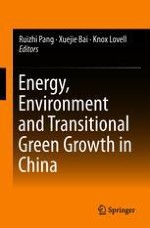2018 | OriginalPaper | Chapter
4. Environmental Productivity Growth in Consumer Durables
Author : Xun Zhou
Published in: Energy, Environment and Transitional Green Growth in China
Publisher: Springer Singapore
Activate our intelligent search to find suitable subject content or patents.
Select sections of text to find matching patents with Artificial Intelligence. powered by
Select sections of text to find additional relevant content using AI-assisted search. powered by
